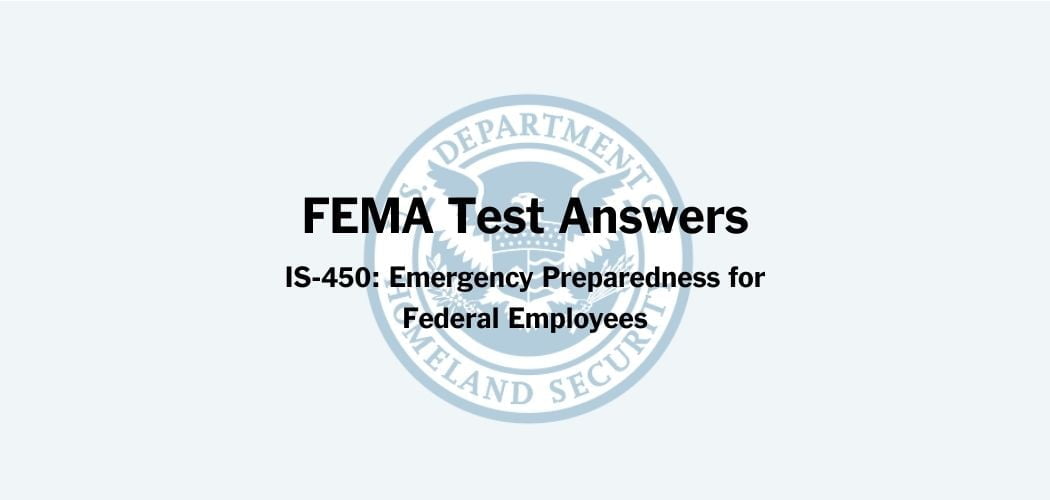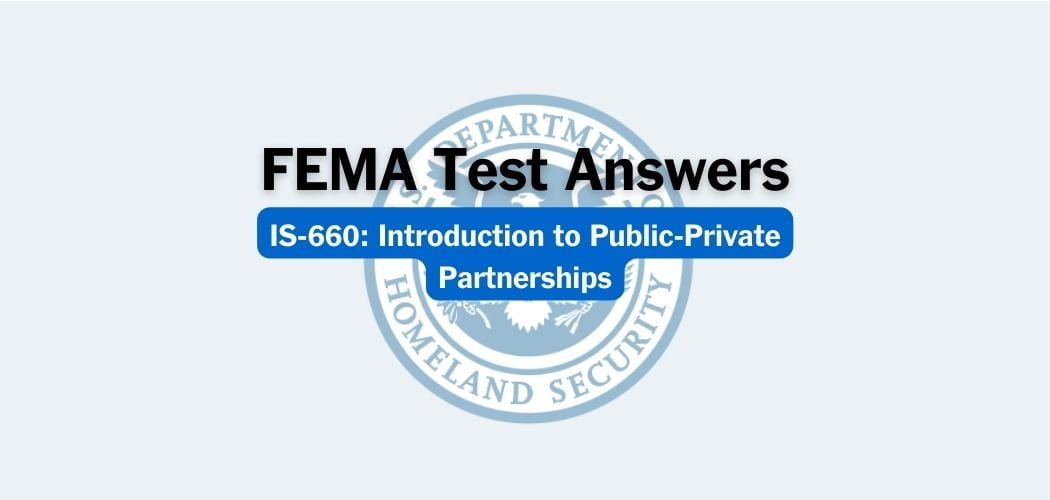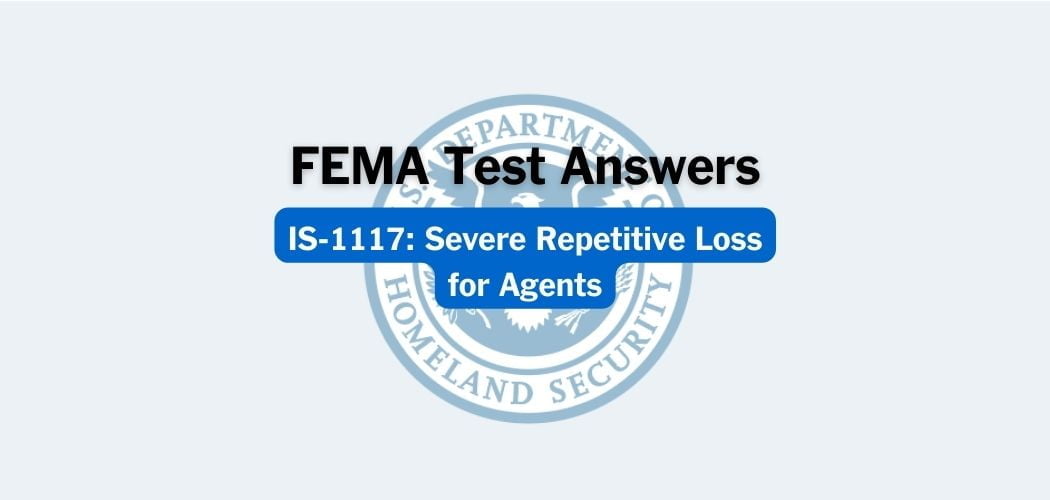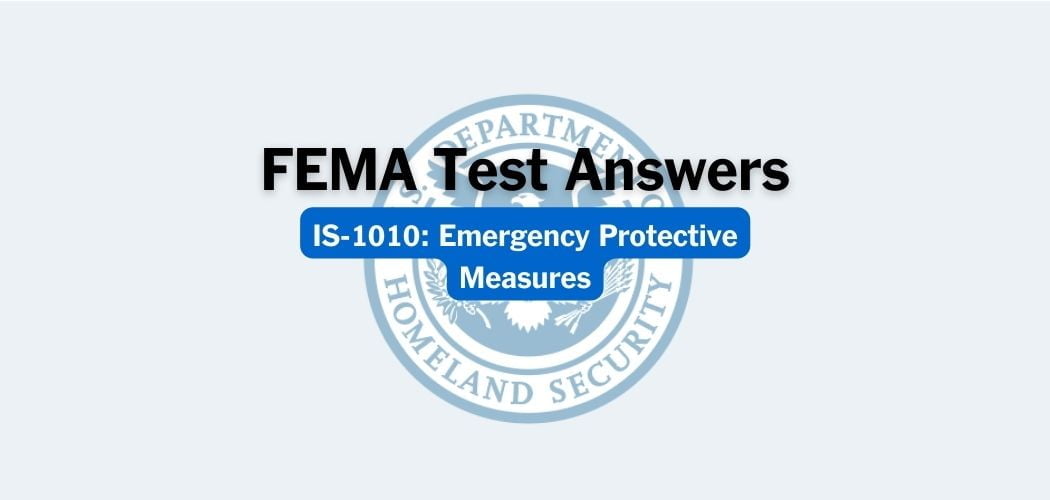Overview: The FEMA IS-1112 course was published on 9/2/2015 to introduce adjusters to the National Flood Insurance Program (NFIP). The first lesson reviews the necessary qualifications and processes to become a flood adjuster and the resources available to help adjusters learn what they need to know to become flood certified. The second lesson discusses the history and organization of the NFIP, provides an overview of the Standard Flood Insurance Policy (SFIP) and the use of its three forms, and defines key terms and concepts that flood claims adjusters must know in order to accurately handle flood claims.
Primary audience: FEMA IS-1112 is for insurance adjusters (new and certified). Upon successfully passing the exam, you will receive a Certificate of Achievement noting CE earned through the International Association for Continuing Education & Training (IACET).
FEMA IS-1112 test answers
Each time this test is loaded, you will receive a unique set of questions and answers. The test questions are scrambled to protect the integrity of the exam.
Question 1. Replacement cost applies if a building is insured to 60 percent or more of its full replacement cost immediately before a loss occurs.
A. TRUE✅
B. FALSE
Question 2. How frequently must a flood-certified adjuster attend a FEMA-recognized presentation to maintain his or her active status?
A. Every three years
B. Every six months
C. Every two years✅
D. Every year
Question 3. The minimum amount of property adjusting experience required for NFIP certification is two consecutive years.
A. TRUE✅
B. FALSE
Question 4. The Dwelling Form insures all residential buildings.
A. TRUE
B. FALSE✅
Question 5. What organization is at the top of the NFIP organization chart?
A. Department of Homeland Security
B. NFIP Direct Servicing Agent
C. Federal Emergency Management Agency✅
D. Federal Insurance and Mitigation Administration
Question 6. True or False: The Adjuster Certification Application can be completed online and printed for submission to NFIP iService via fax, email, or regular mail.
A. TRUE✅
B. FALSE
Question 7. An elevated building may not be elevated by which of the following?
A. Foundation walls
B. Shear walls✅
C. Posts
D. Piers
E. Stem Wall
Question 8. Which of the following is not categorized as a residential building?
A. Single-family dwelling units in a condominium building
B. Assisted-living facilities
C. Apartment buildings
D. Toolshed✅
Question 9. The Adjuster Claims Manual outlines the necessary qualifications and expectations of an NFIP claims adjuster for the WYO Program.
A. TRUE✅
B. FALSE
Question 10. Lynn is capable of writing a scope of damage and dollar estimate of up to $500,000 in losses. She is qualified to apply for certification for RCBAP.
A. TRUE
B. FALSE✅
Question 11. Adjusters who want to work for the WYO Program must submit a separate certification application to each independent adjusting firm.
A. TRUE
B. FALSE✅
Question 12. FEMA issues NFIP guidance on a quarterly basis in the form of WYO Bulletins.
A. TRUE✅
B. FALSE
Question 13. The NFIP Direct Servicing Agent is a contractor hired by FEMA to issue and service flood insurance policies as well as handle claims.
A. TRUE✅
B. FALSE
Question 14. John is seeking approval for the Residential area of authorization. To qualify, he must be capable of preparing an accurate scope of damage up to what dollar amount?
A. $250,000✅
B. $50,000
C. $175,000
D. $100,000
Question 15. Which of the following is not a requirement for becoming a flood-certified adjuster?
A. Submit an Adjuster Certification Application
B. Attend a FEMA-recognized NFIP claims presentation
C. Have a minimum of four consecutive years of property adjusting experience✅
D. Attend the Flood Insurance Reform Act (FIRA) class for insurance agents
Question 16. True or False: Independent adjusters are included in the NFIP organization chart.
A. TRUE
B. FALSE✅
Question 17. Which resource will assist a policyholder with compliance?
A. Standard Flood Insurance Policy
B. Adjuster Claims Manual
C. Increased Cost of Compliance brochure✅
D. Flood Insurance Claims Handbook
Question 18. If a condominium building is less than 75% residential, it is insured by which form?
A. RCBAP Form
B. Either the RCBAP or General Property Form
C. General Property Form✅
D. Either the RCBAP or Dwelling Form



